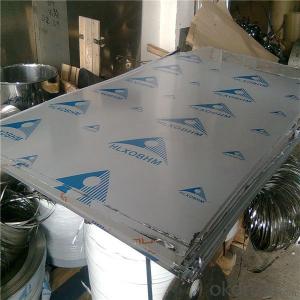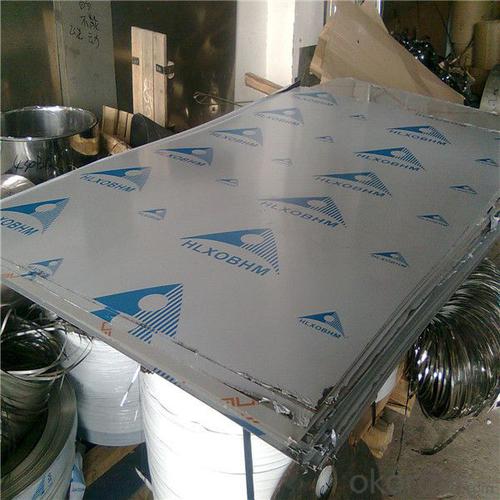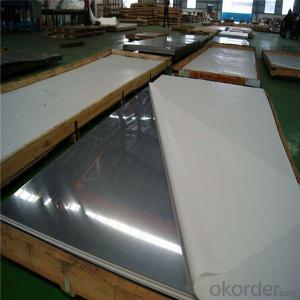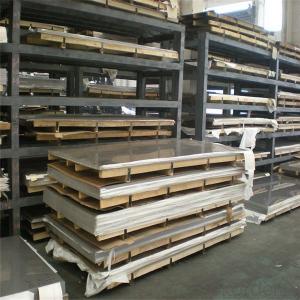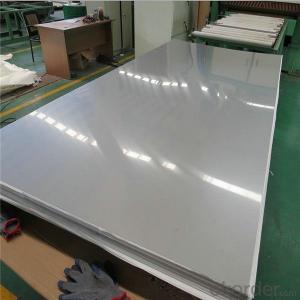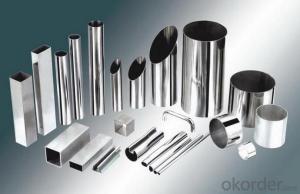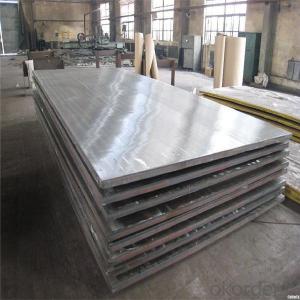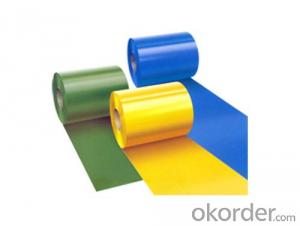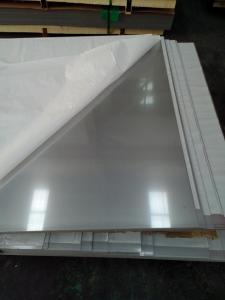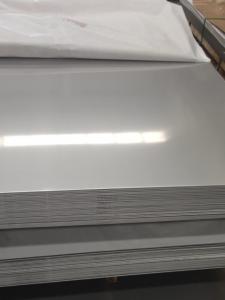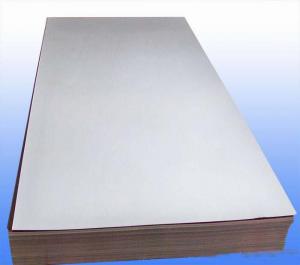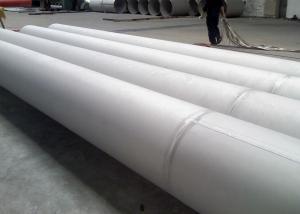2205 Stainless Steel Plate Price per ton
- Loading Port:
- Shanghai
- Payment Terms:
- TT OR LC
- Min Order Qty:
- 4 m.t.
- Supply Capability:
- 20000 m.t./month
OKorder Service Pledge
OKorder Financial Service
You Might Also Like
Specification
duplex 2205 stainless steel plate
tem | Stainless steel plate |
Description | Stainless steel sheet,stainless steel plate,cold rolled stainless steel sheet,hot rolled stainless steel sheet, stainless steel checkered sheet,stainless streel decorative sheet. |
Standard | ASTM,AISI,SUS,JIS,EN,DIN,BS,GB |
Material | 201,202,304,304L,309S,310S,316,316L,316Ti,317L,321,347H,409,409L,410,420,430 |
Finish(Surface) | NO.1, NO.2D, NO.2B, BA,NO.3, NO.4,NO.240,NO.400, Hairline,NO.8,Brushed |
Exported Area | USA,UAE,Europe,Asia,Middle East,Africa,South America |
Thickness | Form 0.3mm to 100mm |
Width | 1000mm,1219mm(4feet),1250mm,1500mm,1524mm(5feet), 1800mm,2200mm or we can also help cut as you require |
Length | 2000mm,2440mm(8feet),2500mm,3000mm,3048mm(10feet), 5800mm, 6000mm or we can make the length as you require |
Application | Stainless steel sheet apply to construction field,shipbuildingindustry,petroleum&chemical industries, war and electricity industries, food processing and medical industry, boiler heat exchanger, machinery and hardware fields. Stainless steel sheet can be made according to the customer requirements. Fast delivery.Quality assured.Welcome to order more. |
Package | Standard seaworthy package(wooden boxes package,pvc package, and other package) |
Delivery Time | According to your size and quantity or as customers'require |
Payment | T/T ,L/C, Western Union |
Advantage | Good quality with reasonable price |
These are the normal items, for the special requirements,we can also meet.
Surface finish | Characteristics and application |
NO.2B | The surface brightness and flatness of no2B is better than no2D. then through a special surface treatment to improve its mechanical properties,No2B could nearly satisfy comprehensive uses. |
NO.3 | Polished with abrasive belt of git#100-#200, have better brightness with discontinuous coarse stria, used as inner and external ornaments for building, electrical appliances and kitchen utensils etc. |
NO.4 | Polished with abrasive belt of grit #150-#180,have better brightness with discontinuous coarse stria,but thinner than No3, are used as bathtub buildings inner and external ornaments electrical appliances kitchen utensils and food processing equipment etc. |
HL | Polished with abrasive belt of grit #150-#320 on the NO.4 finish and has continuous streaks, mainly used as buildings ornaments elevators,door of building, frontal plate etc. |
BA | Cold rolled, bright annealed and skin-passed, the product have excellent brightness and good reflexivity like mirror,kitchen apparatus,ornament etc. |
8K | The product have excellent brightness and prefer reflexivity can to be the mirror. |
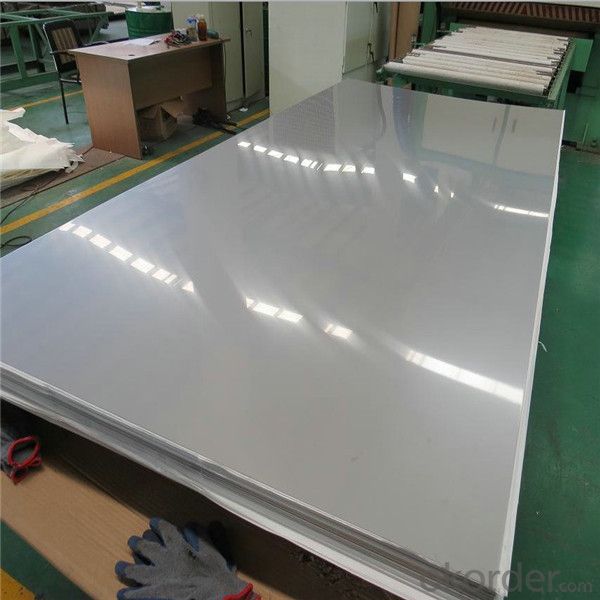
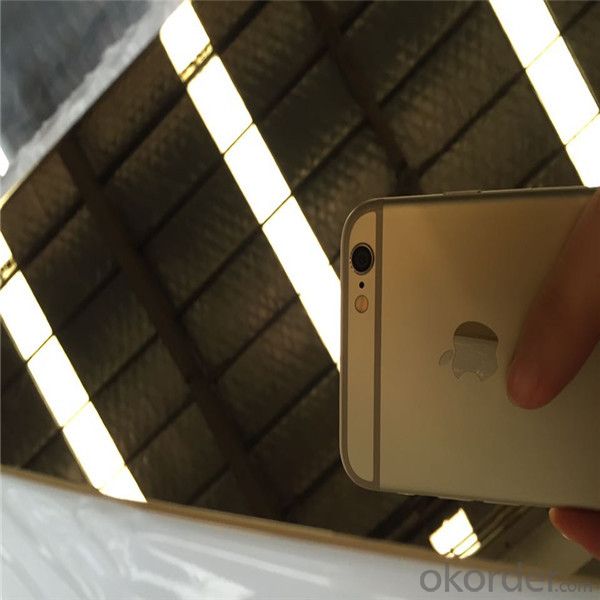
Our Advantages
• All products are made of high-quality imported raw materials.
• Our products are certified by ISO9001:2008 authentication quality systems.
• we are nominated as the AAA enterprise by Jiangsu government.
• Quick Response to Your Enquiry.
- Q: Can stainless steel sheets be used for water treatment equipment?
- Yes, stainless steel sheets can be used for water treatment equipment. Stainless steel is highly resistant to corrosion and oxidation, making it an ideal material for water treatment applications. It is commonly used for tanks, pipes, valves, and other components in water treatment systems. Stainless steel's durability and hygienic properties make it suitable for handling various types of water, including drinking water, wastewater, and industrial process water. Additionally, stainless steel is easy to clean and maintain, ensuring the longevity and efficiency of water treatment equipment.
- Q: Are stainless steel sheets resistant to impact?
- Stainless steel sheets possess a general resistance to impact. Renowned for their robustness and durability, stainless steel is capable of enduring substantial force without deformation or fracture. This quality renders stainless steel sheets highly sought after in the construction, automotive, and aerospace sectors, where impact resistance is imperative. Moreover, the impact resistance of stainless steel sheets can be augmented by subjecting them to additional hardening or tempering processes, tailored to meet the precise demands of the application at hand.
- Q: Can stainless steel sheets be used for conveyor belts?
- Yes, stainless steel sheets can be used for conveyor belts. Stainless steel is a highly durable and corrosion-resistant material, making it suitable for various industrial applications, including conveyor belts. Stainless steel sheets can withstand high temperatures, heavy loads, and abrasive materials, making them ideal for conveying purposes. Additionally, stainless steel's smooth surface allows for easy movement of products and minimizes friction, resulting in efficient and reliable conveyor operations.
- Q: What are the different types of stainless steel sheet patterns?
- Stainless steel sheet patterns come in a variety of options. Some of the most commonly used patterns are as follows: 1. The plain or smooth pattern: This pattern is the simplest and most basic, offering a smooth and flat surface. 2. The diamond pattern, also known as tread plate or checker plate: This pattern has raised diamond-shaped ridges, providing excellent slip resistance. 3. The tear drop pattern: Similar to the diamond pattern, this one has raised teardrop-shaped ridges, offering enhanced slip resistance. 4. The linen pattern: This pattern resembles the texture of linen fabric, with a series of parallel lines intersected by a crisscross pattern. 5. The quilted pattern: Resembling a quilted fabric, this pattern has a diamond-shaped or square-shaped design. 6. The hammered pattern: With a textured surface resembling the marks left by a hammer, this pattern adds visual interest and dimension. 7. The perforated pattern: Featuring small holes or perforations in the sheet, this pattern allows for improved ventilation and drainage in certain applications. These examples represent just a fraction of the stainless steel sheet patterns available. Each pattern offers unique aesthetic and functional advantages, providing greater versatility in design and application.
- Q: Can stainless steel sheets be used for desalination plants?
- Yes, stainless steel sheets can be used for desalination plants. Stainless steel is often used in desalination plants due to its corrosion resistance and durability. The high salt content and corrosive nature of seawater make it necessary to use materials that can withstand these harsh conditions. Stainless steel offers excellent resistance to corrosion, ensuring the longevity and efficiency of the desalination plant equipment. Additionally, stainless steel is also hygienic and easy to clean, making it suitable for desalination plants where water purity is of utmost importance.
- Q: How do I prevent corrosion under insulation on stainless steel sheets?
- In order to avoid corrosion under insulation on stainless steel sheets, there are several measures that can be taken: 1. Make careful choices when selecting insulation materials. Opt for materials that are compatible with stainless steel and have a low water absorption rate. Avoid using materials that can cause galvanic corrosion when they come into contact with stainless steel. 2. Ensure that the insulation thickness is adequate to prevent moisture condensation on the surface of the stainless steel. Moisture condensation can trap moisture and speed up the corrosion process. Seek advice from an insulation specialist to determine the appropriate thickness for your specific situation. 3. Install vapor barriers between the insulation and the stainless steel sheets. These barriers act as a moisture barrier and prevent water or moisture from entering, which can lead to corrosion. Vapor barriers can be made from materials like foil or plastic films. 4. Pay attention to proper installation techniques to avoid any gaps or areas where moisture can accumulate. Focus on the joints, seams, and connections, ensuring that they are tightly sealed to prevent water from penetrating. 5. Regularly inspect and maintain the insulation system to detect any signs of damage, such as leaks or deterioration. Promptly repair any damaged insulation or vapor barriers to prevent moisture from reaching the stainless steel surface. 6. Provide sufficient ventilation to prevent moisture buildup in enclosed spaces. Good airflow can help reduce the occurrence of condensation and subsequent corrosion. 7. Consider using cathodic protection methods, such as sacrificial anodes or impressed current systems, to protect stainless steel sheets from corrosion. These methods generate an electrical current that counteracts the corrosion process, extending the lifespan of the stainless steel. It is important to consult with corrosion specialists or insulation experts to ensure that the best practices are implemented for your specific application and environment.
- Q: Can stainless steel sheets be used for roofing or cladding?
- Yes, stainless steel sheets can be used for roofing or cladding. Stainless steel is a durable and corrosion-resistant material that is well-suited for exterior applications. It offers excellent strength and can withstand harsh weather conditions, making it an ideal choice for roofing or cladding. Additionally, stainless steel has a sleek and modern appearance, which can enhance the aesthetic appeal of a building. Its longevity and low maintenance requirements also make it a cost-effective option in the long run. Overall, stainless steel sheets are a reliable and versatile choice for roofing or cladding projects.
- Q: How do you join stainless steel sheets together?
- Different methods can be employed to connect stainless steel sheets, depending on the desired outcome and specific application. Here, we present a few commonly used techniques: 1. Welding: Stainless steel sheets can be welded using various methods like TIG (Tungsten Inert Gas), MIG (Metal Inert Gas), or spot welding. Through welding, a strong and enduring bond is formed between the sheets, ensuring a secure connection. 2. Mechanical Fastening: By utilizing mechanical fasteners such as screws, bolts, or rivets, stainless steel sheets can be effectively joined. This approach is commonly employed when disassembly or reassembly is necessary, as it allows for easy removal and reinstallation. 3. Adhesive Bonding: Specialized adhesives specifically designed for stainless steel can be utilized to connect sheets together. These adhesives create a robust bond while preserving the aesthetics of the stainless steel surface. However, adhesive bonding may not be suitable for applications involving high stress or temperature. 4. Clinching: The clinching method involves applying a special tool to press the stainless steel sheets together, resulting in a mechanical interlock. This technique is frequently used for joining thin sheets and offers a cost-effective and expeditious solution. When selecting the most suitable method, it is crucial to consider the project's specific requirements, including load-bearing capacity, temperature, corrosion resistance, and aesthetics. Seeking guidance from a professional or conducting thorough research can assist in ensuring that the chosen joining technique is appropriate for the intended application.
- Q: What is the water absorption rate of stainless steel sheets?
- The water absorption rate of stainless steel sheets is extremely low, as stainless steel is a non-porous material that does not readily absorb water.
- Q: Are stainless steel sheets resistant to sulfuric acid?
- Yes, stainless steel sheets are generally resistant to sulfuric acid.
Send your message to us
2205 Stainless Steel Plate Price per ton
- Loading Port:
- Shanghai
- Payment Terms:
- TT OR LC
- Min Order Qty:
- 4 m.t.
- Supply Capability:
- 20000 m.t./month
OKorder Service Pledge
OKorder Financial Service
Similar products
Hot products
Hot Searches
Related keywords
